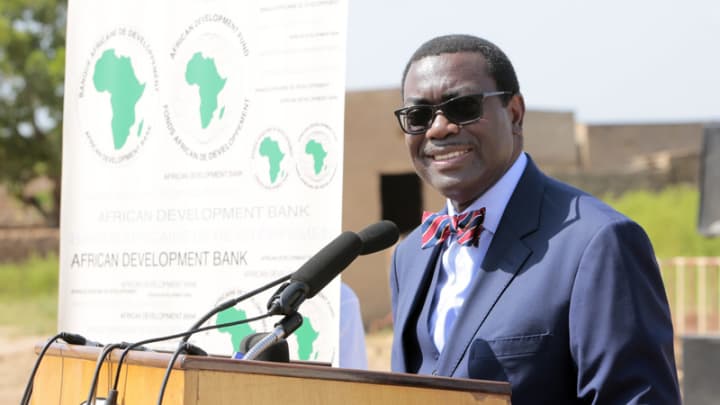African Development Bank is forecasting a 5.3% growth rate for the Ghanaian economy this year. According to its 2022 Economic Outlook Report released at the ongoing Annual Meetings, it is however projecting a marginal drop in the country’s growth rate to 5.1% in 2023.
The expansion of the economy in 2022 will however be higher than Sub Saharan’s Africa Average of 3.8% in 2022.
The expansion of the economy for this year is almost in line with that of the International Monetary Fund and the World Bank that are projecting 5.2% and 5.5% growth rates respectively.
The report said the strong economic growth will be supported by the Ghana COVID-19 Alleviation and Revitalization of Enterprises Support Programme.
"The outlook remains positive, with projected GDP growth of 5.3% and 5.1% in 2022 and 2023 supported by the Ghana COVID-19 Alleviation and Revitalization of Enterprises Support Programme. Potential inflationary pressure exists due to increased energy and food prices associated with the impact of the Russia–Ukraine".
It however expressed worry about the potential inflationary pressures due to increased energy and food prices associated with the impact of the Russia–Ukraine.
“Inflation is projected to surge to 15% in 2022 before falling to 9.1% in 2023. The Bank of Ghana is expected to adopt a tight monetary policy stance”, it also pointed out.
AfDB again projected the narrowing of the fiscal deficit to 12.8% of GDP in 2022 and to 10.3% in 2023, spurred by revenue enhancing reforms. The current account deficit is also projected to narrow to 1.6% of GDP in 2022 and 3.3% in 2023,
on increased exports.
Africa’s growth outlook highly uncertain, with risks tilting to the downside.
AfDB also said the spillover effects from the Russia–Ukraine conflict and related sanctions on Russia may cause a larger decline in global output than currently projected.
A combination of low COVID-19 vaccination rollout and emergence of new COVID-19 variants may force countries to retain some restrictions. Other downside factors include heightened debt vulnerabilities, tight global financial conditions as inflationary pressures rise, the effect of the Russia–Ukraine conflict and related sanctions on Russia, climate and environmental risks, and other sociopolitical and security issues, it added.
It also mentioned upside factors including faster vaccination rollout, a comprehensive resolution of debt problems, and policies to accelerate structural transformation and build economic resilience.
“Macroeconomic fundamentals have generally improved, but considerable challenges remain in the medium term, due largely to persistence of the pandemic effects and volatility induced by the impact of the Russia–Ukraine conflict”.
Economy expanded by 5.4% in 2021
The economy expanded by 5.4% in 2021, far higher than the 0.4% recorded in the year 2020, a period of COVID-19 pandemic.
The strong growth rate was driven by the Services sector (9.4%), particularly the Information, Communication and Technology sub-sector (33.1%) and the Agriculture sector (8.4%), especially the Fishing sub-sector (13.4%).
Latest Stories
-
Bawumia joins thousands in Kumasi for burial prayers for Ashanti Regional Imam
13 minutes -
Blue Gold Bogoso Prestea Limited challenges government actions in court
40 minutes -
Patrick Atangana Fouda: ‘A hero of the fight against HIV leaves us’
1 hour -
Trinity Oil MD Gabriel Kumi elected Board Chairman of Chamber of Oil Marketing Companies
2 hours -
ORAL campaign key to NDC’s election victory – North America Dema Naa
2 hours -
US Supreme Court to hear TikTok challenge to potential ban
2 hours -
Amazon faces US strike threat ahead of Christmas
3 hours -
Jaguar Land Rover electric car whistleblower sacked
3 hours -
US makes third interest rate cut despite inflation risk
3 hours -
Fish processors call for intervention against illegal trawling activities
3 hours -
Ghana will take time to recover – Akorfa Edjeani
4 hours -
Boakye Agyarko urges reforms to revitalise NPP after election defeat
4 hours -
Finance Minister skips mini-budget presentation for third time
4 hours -
‘ORAL’ team to work gratis – Ablakwa
4 hours -
Affirmative Action Coalition condemns lack of gender quotas in Transition, anti-corruption teams
4 hours

